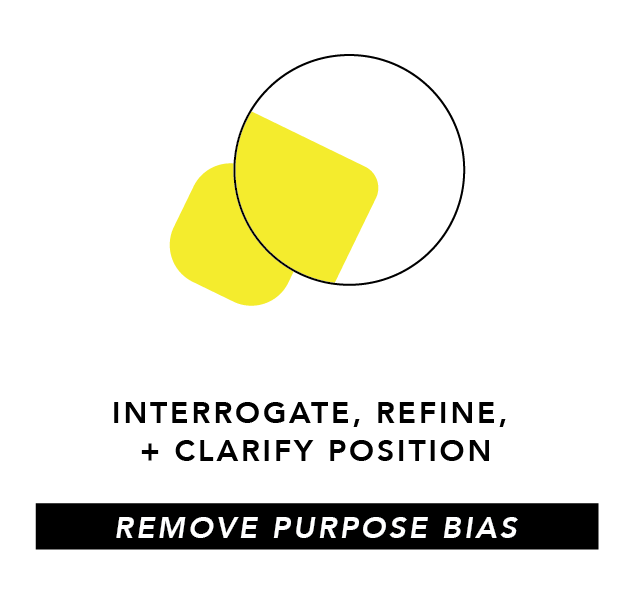INSIGHT Communication: Our Path to Connection
The sequence of communication moves us toward a more complete and dynamic understanding of our world and one another.
Communication is a really complex thing. In our rapidly transmitting, constant interfacing, hyperconnected modernity, it seems to become more compounded.
Our sophisticated and uniquely human ability to share culture and history has been co-opted to spread misleading headlines, to acquire customers, and to provoke action over understanding. We’re losing the ability (and perhaps the desire as well?) to share ourselves and to forge connections by telling stories that inspire us, frighten us, and move us.
Our addiction to fast, catchy, oversimplified, provocative, and repeatable statements has us polarized and disconnected. We are left unable to navigate a world of subtlety, complexity, and duality, toward awareness of a complete idea.
The following is a map of the sequence of communication—a designer’s first step in approaching the problem. Here we see the areas of drop-off and failure and can identify ways to become better communicators.
The creator has an idea, position or thought that seems simple enough, complete, and understandable. Time to share, but with whom?
Audience identification is the act of deciding who must be the receiver of the position, idea, or information. This may be a single person or a large group.
This is the initial stage of understanding the prejudices and preferences of the audience and how best to approach them to engage in a deeper conversation.
With an understanding of the audience, the position can be shared. A lack of empathy in communication is a fast-track to the end of the conversation.
When an idea is shared, at any level of empathic scrutiny, an audience response is inevitable and essential to deeper connection. To continue the communication, listen to audience responses and pivot your message to adapt toward their needs.
There are 3 options a communicator faces at this stage.
This is not a simplification, but a refinement and clarification of the purpose and intended meaning of your message. What needs a better explanation? This is often an uncomfortable and difficult process, but essential for connection.
What is your audience communicating that you are refusing to take into account? You need to actually hear them and deepen your understanding of their needs, not gerrymander their opinions and preferences to your biases.
Details that illustrate a more complete story are essential, while those that are excessive must be stripped away. This is not a new position, but a (continual) refinement of the message.
It is the job of the communicator to maintain stamina toward building and communicating the complete idea while helping the audience come into awareness.
Through a delicate but important harmony of sharing, listening, empathy, and compassionate pivoting, mutuality can be achieved. Both sides must come together at once for a connection to be made. When the audience understands, the position of the communicator they will accept the message. This is possible only when the communicator completely adapts their message to an audience.
Certainly, there is value in quick, transactional communications. They serve a purpose. However, for us to connect in our very human way about ideas, innovations, perceptions, and possibilities, we need to recognize the difficulties of non-transactional communications, and not confuse the two.
By giving more importance to the nuance and the value of communication, we can perhaps give each other the space and patience needed to build understanding and deeper connections. We may see ourselves and our audiences as multi-faceted, complex beings and more often seek to tell and hear the stories of our complex world. We may no longer care for the polarized dogma of incomplete ideas of right or wrong, loved or lost.
When we open our minds up to the complexity and challenge of communicating, we become more human and more complete in our connections. Our world becomes both more dynamic and more understandable.
_______________
Heather Furman
05 July, 2022










